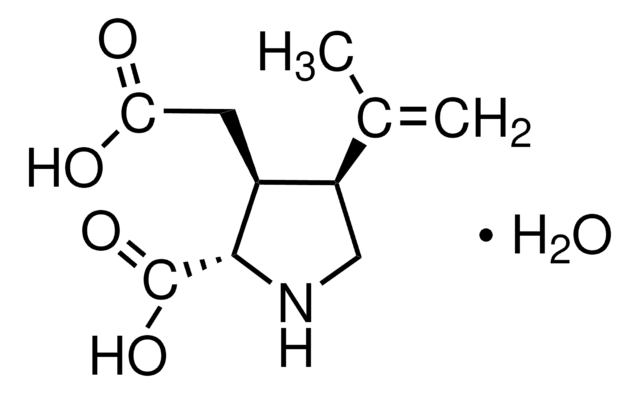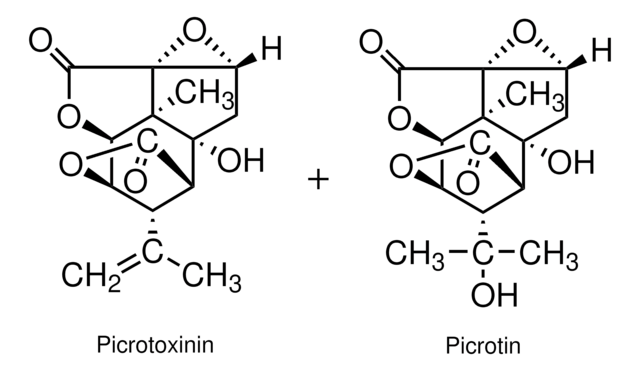Key Documents
A0326
(S)-AMPA
≥97%
Synonim(y):
(S)-α-Amino-3-hydroxy-5-methylisoxazole-4-propionic acid
About This Item
Polecane produkty
Poziom jakości
Próba
≥97%
Postać
powder
ciąg SMILES
Cc1onc(O)c1C[C@H](N)C(O)=O
InChI
1S/C7H10N2O4/c1-3-4(6(10)9-13-3)2-5(8)7(11)12/h5H,2,8H2,1H3,(H,9,10)(H,11,12)/t5-/m0/s1
Klucz InChI
UUDAMDVQRQNNHZ-YFKPBYRVSA-N
informacje o genach
human ... GRIA1(2890) , GRIA2(2891) , GRIA4(2893) , GRIK1(2897)
mouse ... Gria1(14799)
rat ... Gria1(50592) , Gria2(29627) , Gria3(29628) , Gria4(29629) , Grik1(29559) , Grik2(54257) , Grik4(24406) , Grin2a(24409) , Grin2b(24410) , Grm6(24419)
Szukasz podobnych produktów? Odwiedź Przewodnik dotyczący porównywania produktów
Opis ogólny
Zastosowanie
Działania biochem./fizjol.
Cechy i korzyści
Kod klasy składowania
11 - Combustible Solids
Klasa zagrożenia wodnego (WGK)
WGK 3
Temperatura zapłonu (°F)
Not applicable
Temperatura zapłonu (°C)
Not applicable
Środki ochrony indywidualnej
Eyeshields, Gloves, type N95 (US)
Certyfikaty analizy (CoA)
Poszukaj Certyfikaty analizy (CoA), wpisując numer partii/serii produktów. Numery serii i partii można znaleźć na etykiecie produktu po słowach „seria” lub „partia”.
Masz już ten produkt?
Dokumenty związane z niedawno zakupionymi produktami zostały zamieszczone w Bibliotece dokumentów.
Klienci oglądali również te produkty
Nasz zespół naukowców ma doświadczenie we wszystkich obszarach badań, w tym w naukach przyrodniczych, materiałoznawstwie, syntezie chemicznej, chromatografii, analityce i wielu innych dziedzinach.
Skontaktuj się z zespołem ds. pomocy technicznej








